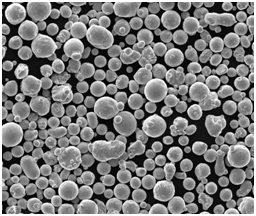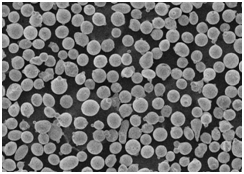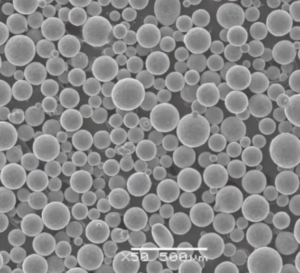Are you wondering what Stellite 3 Powder is all about? Well, you’re in the right place! In this guide, we’ll dive deep into the world of Stellite 3 Powder, a highly advanced cobalt-based alloy powder that offers incredible wear resistance, toughness, and performance in demanding applications. Whether you’re new to the material or an experienced engineer seeking specific details, this guide will help you understand everything you need to know about Stellite 3 Powder—from its composition and properties to its various applications and the different grades available.
Overview of Stellite 3 Powder
Stellite 3 Powder belongs to the family of Stellite alloys, which are known for their exceptional resistance to wear, corrosion, and high temperatures. These cobalt-based alloys are primarily used in applications that require superior durability, especially in extreme environments. Stellite 3 is specifically designed for high-performance applications, offering a unique blend of toughness, hardness, and resistance to oxidation.
Key Points:
- Material type: Cobalt-based alloy powder.
- Primary use: Wear and corrosion resistance in harsh environments.
- Unique feature: High resistance to extreme temperatures and oxidation.
- Applications: Used in industries like aerospace, automotive, power generation, and oil & gas.

Composition of Stellite 3 Powder
Understanding the composition of Stellite 3 Powder is essential to grasp why it performs so well in demanding environments. The alloy is primarily cobalt-based, but it includes other elements that enhance its properties, making it a highly versatile material.
Core Elements in Stellite 3 Powder:
| Element | Percentage Composition |
|---|---|
| Cobalt (Co) | 50-60% |
| Chromium (Cr) | 28-33% |
| Tungsten (W) | 7-10% |
| Carbon (C) | 2-2.5% |
| Nickel (Ni) | 2-4% |
| Iron (Fe) | ≤ 3% |
Cobalt forms the backbone of the alloy, providing excellent wear resistance, while chromium and tungsten add hardness and enhance the material’s ability to resist corrosion and high temperatures. The carbon content contributes to the alloy’s hardness, making it well-suited for wear-prone applications.
Characteristics of Stellite 3 Powder
So, why is Stellite 3 Powder such a popular choice in industries that demand high performance under stress? Let’s break down its core characteristics:
Main Properties of Stellite 3 Powder:
| Property | Description |
|---|---|
| Hardness | Ranges between 48-52 HRC, making it highly wear-resistant. |
| Melting Point | 1300-1350°C, allowing use in high-temperature environments. |
| Corrosion Resistance | Excellent resistance to oxidation and corrosion. |
| Thermal Shock Resistance | Maintains properties under extreme temperature fluctuations. |
| Machinability | Fairly difficult to machine due to its hardness. |
| Wear Resistance | Exceptional wear resistance, especially against abrasion. |
| Oxidation Resistance | Strong resistance even at elevated temperatures. |
One of the reasons Stellite 3 Powder is so widely used is its combination of hardness and toughness. It can endure harsh conditions without deteriorating, making it a go-to material in industries that involve high stress, high temperatures, and corrosive environments.
Applications of Stellite 3 Powder
Due to its robust properties, Stellite 3 Powder is used across a wide array of industries, especially in components subjected to high wear and tear. Here’s where you’ll most likely find it:
Common Uses for Stellite 3 Powder:
| Industry | Application |
|---|---|
| Aerospace | Turbine blades, exhaust valves, and hot section components. |
| Automotive | Engine components, valve seats, and fuel injector nozzles. |
| Oil & Gas | Valve trims, drill bits, and downhole tools. |
| Power Generation | Steam turbines, bearings, and pump components. |
| Mining | Crusher jaws, hammers, and wear plates. |
| Marine | Propeller shafts, pump parts, and valve seats. |
Stellite 3 is indispensable in applications that require excellent wear and corrosion resistance. Whether it’s the searing heat inside an aircraft engine or the abrasive conditions in mining equipment, Stellite 3 Powder ensures components last longer with minimal degradation.






Types and Grades of Stellite Powders
While Stellite 3 is highly regarded, there are numerous other variations within the Stellite family. Each has its own unique composition, properties, and applications. Here’s a closer look at some of the most popular Stellite powders available.
Top 10 Stellite Powder Models:
| Model | Description |
|---|---|
| Stellite 1 | Offers maximum hardness but is more brittle; ideal for abrasive wear applications. |
| Stellite 3 | Balanced for high wear and corrosion resistance in extreme environments. |
| Stellite 4 | Slightly softer than Stellite 3; provides better machinability while maintaining strength. |
| Stellite 6 | Known for its all-around performance; used for general wear and tear applications. |
| Stellite 12 | Offers better hardness than Stellite 6 but with lower ductility. |
| Stellite 20 | High in molybdenum, offering better resistance to oxidation and sulfuric environments. |
| Stellite 21 | Lower hardness, ideal for applications needing impact and shock resistance. |
| Stellite 25 | Contains higher chromium for enhanced corrosion resistance in chemical environments. |
| Stellite 31 | Excellent thermal and oxidation resistance; used in high-temperature applications. |
| Stellite 190 | Offers superior toughness combined with excellent wear resistance. |
Each of these powders serves a slightly different purpose. For example, Stellite 6 is considered a more versatile option for general applications, while Stellite 1 is the go-to for maximum hardness in high-abrasion scenarios. Depending on your application, one model might be better suited than another.
Specifications, Sizes, and Grades of Stellite 3 Powder
Choosing the right specifications is crucial for getting the most out of Stellite 3 Powder. Below is a general table highlighting key specifications.
Stellite 3 Powder Specifications:
| Specification | Description |
|---|---|
| Particle size | Available in various sizes, from 10 µm to 150 µm. |
| Density | 8.4 g/cm³ |
| Melting Point | 1300-1350°C |
| Standard Grades | AMS 5382, ASTM F75, ISO 5832-4 |
| Packaging | Typically available in 5 kg, 10 kg, and larger quantities. |
These specifications will vary depending on the supplier and the intended application, but they offer a general overview of what to expect when purchasing Stellite 3 Powder.
Pricing and Suppliers of Stellite 3 Powder
The cost of Stellite 3 Powder can vary widely based on factors like purity, quantity, and supplier. Let’s take a look at some general pricing ranges and top suppliers:
Suppliers and Pricing Information:
| Supplier | Price Range (USD/kg) | Packaging Options |
|---|---|---|
| Kennametal | $400-$600 | 5 kg, 10 kg, bulk |
| Höganäs AB | $450-$550 | 1 kg, 5 kg, bulk |
| Oerlikon Metco | $500-$700 | 1 kg, 10 kg, bulk |
| Carpenter Technology | $450-$600 | 5 kg, bulk |
| Sandvik | $500-$650 | 2 kg, 5 kg, bulk |
The pricing depends on the volume you’re purchasing and the exact specification of the Stellite 3 Powder. Keep in mind that prices may fluctuate based on market conditions and availability.
Advantages and Disadvantages of Stellite 3 Powder
Like any material, Stellite 3 Powder has its strengths and limitations. Let’s compare them.
Pros and Cons of Stellite 3 Powder:
| Pros | Cons |
|---|---|
| Excellent wear resistance | Difficult to machine due to hardness |
| High corrosion resistance | More expensive than some alternatives |
| Performs well in extreme temperatures | Limited ductility |
| Long service life | High density adds weight to components |
Stellite 3 Powder excels where wear, corrosion, and temperature resistance are key. However, its high hardness makes it more challenging to work with, and it can be more expensive than other options, which may be a limitation for some budgets.

FAQ
Here’s a collection of frequently asked questions to help you further understand Stellite 3 Powder and its applications.
What is Stellite 3 Powder used for?
It’s used in industries requiring high wear and corrosion resistance, such as aerospace, automotive, and oil & gas.
What is the hardness of Stellite 3 Powder?
Stellite 3 Powder has a hardness of 48-52 HRC.
Can Stellite 3 Powder be machined?
Yes, but it is difficult due to its hardness. Specialized tools are required.
How is Stellite 3 Powder applied?
It’s commonly applied through thermal spraying or hardfacing techniques.
Is Stellite 3 better than Stellite 6
Stellite 3 offers higher hardness, but Stellite 6 is more versatile for general wear applications.
Conclusion
In summary, Stellite 3 Powder is an outstanding material choice for applications that require extreme durability, corrosion resistance, and the ability to withstand high temperatures. From aerospace turbine blades to downhole oil tools, this cobalt-based alloy performs where others fail. Its high hardness and unique properties make it a superior choice, although it comes at a higher price and with some machining challenges.
By understanding its composition, properties, and various applications, you can make informed decisions about whether Stellite 3 Powder is the right material for your needs. Whether you’re looking for durability in automotive parts or extreme wear resistance in mining tools, Stellite 3 Powder has you covered!

